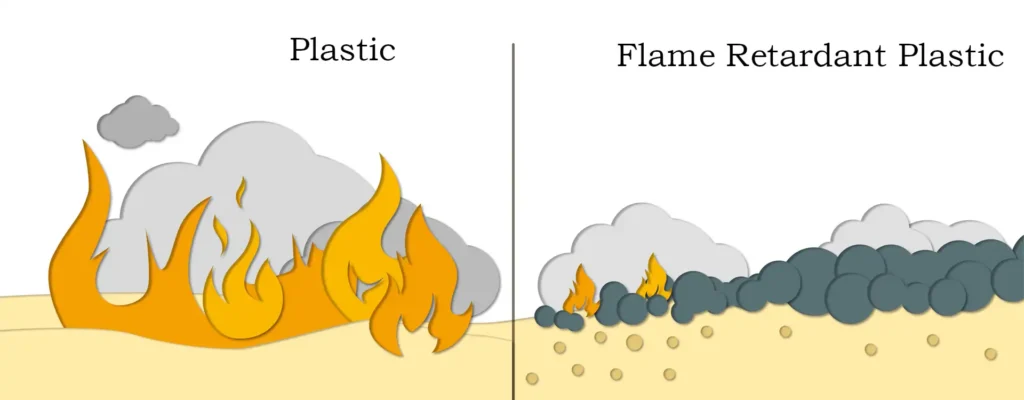Magnesium hydroxide is currently the most widely used flame retardant, followed by aluminum hydroxide. Magnesium hydroxide is widely used because it does not produce secondary pollution, has excellent thermal stability, is non-toxic, non-corrosive, non-volatile, does not produce toxic gases, is inexpensive, and is widely available. At the same time, magnesium hydroxide is a flame retardant that integrates the three functions of flame retardancy, smoke suppression, and filling.

The flame retardant mechanism of magnesium hydroxide flame retardant lies in the decomposition temperature of magnesium hydroxide being 340°C to 490°C; after decomposition, a dehydration reaction occurs, which can absorb heat from the surface of the material. When a large amount of heat on the surface of the material is absorbed, the surface temperature of the material combustion can be reduced, thereby achieving the effect of flame retardancy. A large amount of water vapor generated by the dehydration of magnesium hydroxide can effectively dilute the concentration of combustible gases and reduce the combustion-supporting effect of combustible gases. The residual magnesium oxide produced by the decomposition of magnesium hydroxide is a dense oxide, which can be deposited on the surface of the plastic, inhibiting the production of combustible gases, playing the role of heat insulation and oxygen isolation, and achieving the effect of smoke suppression. Magnesium hydroxide can also promote the carbonization of the plastic surface, isolating oxygen from contacting the plastic.
The above are the various advantages of magnesium hydroxide as a flame retardant. However, in practical applications, magnesium hydroxide as a flame retardant also has unavoidable shortcomings. For example, magnesium hydroxide has poor acid resistance; a large amount of magnesium hydroxide must be added to the product to achieve a good flame retardant effect, which reduces other aspects of the product, such as mechanical properties and electrical properties; and the compatibility of magnesium hydroxide with plastic deteriorates; dripping is also prone to occur; increasing processing difficulty. Therefore, in order to solve these problems and apply the excellent flame retardant effect of magnesium hydroxide in practice, the theory and process of surface treatment of magnesium hydroxide (also called modification treatment of magnesium hydroxide, or activation treatment of magnesium hydroxide) have emerged, which has made magnesium hydroxide widely used in industry.
Modified magnesium hydroxide is made by adding some specific surface treatment agents to magnesium hydroxide and stirring it at high speed with a special machine. In the production process, a certain high temperature state must be ensured so that the surface treatment agent can be evenly and effectively coated on the surface of the magnesium hydroxide particles. The surface treatment technologies we commonly use include coating and coupling. Specific varieties include borate esters, phosphate esters, titanate esters, aluminate esters, silanes, anionic surfactants, stearic acid, paraffin wax, and rare earth coupling agents.
